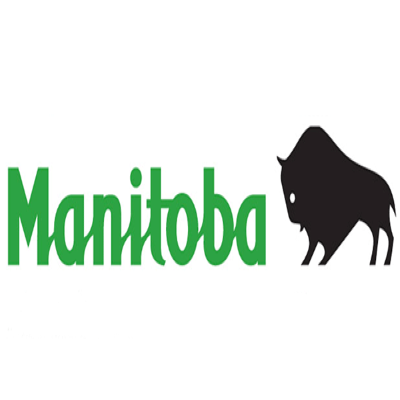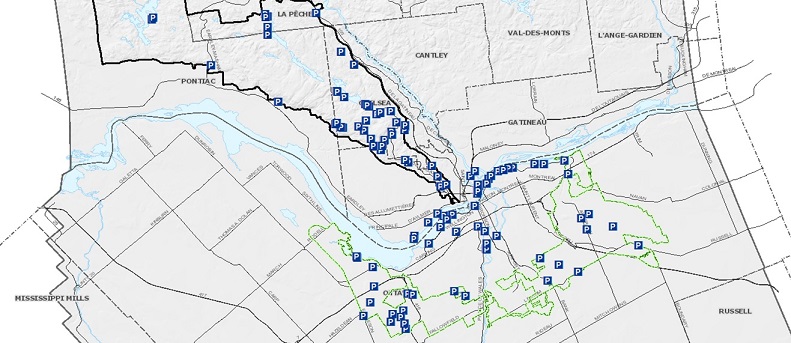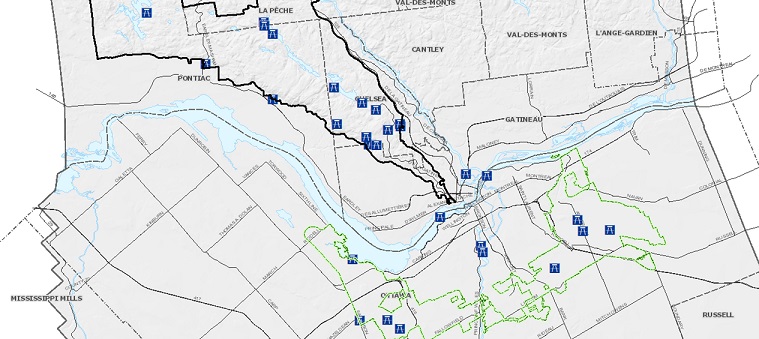society
Type of resources
Available actions
Topics
Keywords
Contact for the resource
Provided by
Years
Formats
Representation types
Update frequencies
status
Scale
Resolution
-

This dataset lists the location of provincial correctional facilities for youth and adults, and community corrections offices.
-

This the data for the Winnipeg AVPA Regulation's interactive web map. It contains two polygon datasets that help users determine whether a property is affected by requirements in the regulation and a point dataset to help users navigate to properties This is the data for the Winnipeg Airport Vicinity Protection Area Regulation's interactive web map. It was developed to help interested parties determine whether a property is affected by the Airport Vicinity Protection Area Regulation. To protect and foster the airport’s operations and continued growth, while ensuring orderly and efficient development within Winnipeg, the Province has adopted an Airport Vicinity Protection Area Regulation under The City of Winnipeg Charter. The regulation defines two protection areas called "Area 1" and "Area 2".These areas provide direction on where and what type of residential development may take place near the airport. Area 1 comprises of lands immediately adjacent to the airport, where no new residential development will be permitted, except for replacement of buildings and minor infilling. Area 2 is located further away from the airport, where new or replacement residential development may be constructed. All development within the regulated lands must comply with indoor noise level limits set out in the Regulation. The parcel boundaries in this interactive map are representations of parcels as defined by plan of subdivision or plan of survey registered at the Land Titles Office. This type of property boundary was chosen because the land division in these plans is used to define property ownership in Manitoba.
-

The purpose of this feature layer is to provide the 2009 overland flooding boundary in the Red River Valley. This dataset shows the extent of peak overland flooding in the Red River Valley in 20 09 . Data is based on RADARSAT – 1 satellite imagery. During processing, the raw data set was resampled to 12.5 meter pixel resolution, then classified using PCI Geomatica software which is a specialized software designed to manipulate space born imagery. The final output depicting the flooding boundary is available as a TIFF or Shapefile. Launched in November 1995, RADARSAT-1 was a Canadian-led project which provided useful information to both commercial and scientific users in such fields as disaster management, agriculture, cartography, hydrology, forestry, oceanography, ice studies and coastal monitoring. Equipped with a powerful synthetic aperture radar (SAR) instrument, it acquired images of the Earth day or night, in all weather and through cloud cover, smoke and haze. As of March 2013, the satellite was declared non-operational and is no longer collecting data. Many applications were developed to take advantage of RADARSAT-1 capacity for detecting the presence of water. These included monitoring flooding and the build-up of river ice, and mapping the melting of snow-covered areas. When used for flood monitoring, RADARSAT-1 data helped assess the impact of flooding, predicted the extent and duration of floodwaters, analyzed the environmental impact of water diversion projects, and developed flood mitigation measures. Fields Included:FID : Internal feature numberNAME : Flooded area nameAREA_SQKM : Size of flooded area
-

Point representing each of the parking lots under the maintenance and management of the NCC.
-

This the data for the Winnipeg AVPA Regulation's interactive web map. It contains two polygon datasets that help users determine whether a property is affected by requirements in the regulation and a point dataset to help users navigate to properties This is the data for the Winnipeg Airport Vicinity Protection Area Regulation's interactive web map. It was developed to help interested parties determine whether a property is affected by the Airport Vicinity Protection Area Regulation. To protect and foster the airport’s operations and continued growth, while ensuring orderly and efficient development within Winnipeg, the Province has adopted an Airport Vicinity Protection Area Regulation under The City of Winnipeg Charter. The regulation defines two protection areas called "Area 1" and "Area 2".These areas provide direction on where and what type of residential development may take place near the airport. Area 1 comprises of lands immediately adjacent to the airport, where no new residential development will be permitted, except for replacement of buildings and minor infilling. Area 2 is located further away from the airport, where new or replacement residential development may be constructed. All development within the regulated lands must comply with indoor noise level limits set out in the Regulation. The parcel boundaries in this interactive map are representations of parcels as defined by plan of subdivision or plan of survey registered at the Land Titles Office. This type of property boundary was chosen because the land division in these plans is used to define property ownership in Manitoba.
-

Identification of the NCC's public picnic areas. Picnic tables present, some larger locations have shelters. https://ncc-ccn.gc.ca/places/picnicking https://ncc-ccn.gc.ca/places/picnicking-greenbelt
-

The purpose of this feature layer is to provide the 1997 overland flooding boundary in the Red River Valley. This dataset shows the extent of peak overland flooding in the Red River Valley in 1997 . Data is based on RADARSAT – 1 satellite imagery. During processing, the raw data set was resampled to 12.5 meter pixel resolution, then classified using PCI Geomatica software which is a specialized software designed to manipulate space born imagery. The final output depicting the flooding boundary is available as a TIFF or Shapefile. Launched in November 1995, RADARSAT-1 was a Canadian-led project which provided useful information to both commercial and scientific users in such fields as disaster management, agriculture, cartography, hydrology, forestry, oceanography, ice studies and coastal monitoring. Equipped with a powerful synthetic aperture radar (SAR) instrument, it acquired images of the Earth day or night, in all weather and through cloud cover, smoke and haze. As of March 2013, the satellite was declared non-operational and is no longer collecting data. Many applications were developed to take advantage of RADARSAT-1 capacity for detecting the presence of water. These included monitoring flooding and the build-up of river ice, and mapping the melting of snow-covered areas. When used for flood monitoring, RADARSAT-1 data helped assess the impact of flooding, predicted the extent and duration of floodwaters, analyzed the environmental impact of water diversion projects, and developed flood mitigation measures. Fields Included:FID : Internal feature numberNAME : Flooded area nameAREA_SQKM : Size of flooded area
-

The purpose is to provide end users with a digital data representing the boundaries of incorporated municipalities in Manitoba. It also enables users of Manitoba spatial data to identify which municipality selected features fall within. This dataset is comprised of boundary geometry for all of the incorporated municipalities and Northern Affairs Communities within the Province of Manitoba. The boundaries in this dataset represent the descriptions set forth in the Municipal Status and Boundaries Regulation (567/88R) and subsequent amendments, and regulations under The Northern Affairs Act. The geospatial referencing of the Municipal Boundaries is based on the best available land parcel data for each municipality and Northern Affairs Community. Where available, cadastral data based on registered survey plans was used. Otherwise, the Manitoba Property Assessment Information dataset produced by Manitoba Municipal Relations was used. The delineation of the boundaries was established according to the regulation establishing or amending the boundary of a municipality or Northern Affairs Community. Dataset content is subject to: Ongoing changes in municipal status and boundary and Northern Affairs Community boundary alterations that are generated through annexations, amalgamations, dissolutions or formations, all of which are approved by regulations made under The Municipal Act (for incorporated municipalities) and The Northern Affairs Act (for Northern Affairs Communities). This dataset content is current to the most recent effective date of any such regulation amendment. Ongoing development and maintenance of the land parcel datasets. Improvements to the cadastral data are used to improve the positional accuracy of the municipal boundary polygons. As of the publication date of this dataset the following known issues remain: For municipal boundaries and Northern Affairs Communities that include water boundaries, such as in the Lake Winnipeg and Lake Manitoba areas the water boundary portion that best reflects the municipal boundary was used. In some instances, road allowances on a municipal boundary are included in both of the adjoining municipalities. Please visit the Manitoba Municipal Relations website for more information www.gov.mb.ca/mr/land_use_dev/index.html. The Manitoba Municipal Boundaries data reflects the status of municipal boundaries and Northern Affairs Communities at the time of export and was uploaded to Manitoba Maps as a feature layer. Fields Included: OBJECTID: Sequential unique whole numbers that are automatically generated MUNI_NO: Manitoba municipality identifier number MUNI_NAME: Legal name of municipality MUNI_TYPE: Type of municipality MUNI_LIST_NAME: Name of municipality suitable for alphabetical list MUNI_LIST_NAME_WITH_TYPE: Name of municipality suitable for alphabetical list including type
-

Nova Scotia School Board zones.
-

Web map that shows the location of public schools in Manitoba that offer the French Immersion Program. Web map that shows the location of public schools in Manitoba that offer the French Immersion Program. This inclusive program is for all students whose first language is other than French, regardless of their abilities and needs. The French Immersion Program aims to develop plurilingual, confident, proud and committed global citizens. For more information, go to the French Immersion Schools in Manitoba website. **This third party metadata element was translated using an automated translation tool (Amazon Translate).**
 Arctic SDI catalogue
Arctic SDI catalogue